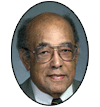Harvard President Drew Faust Pledges “A Different Harvard”: Goal Is a Major Increase in the Number of Black Faculty
 When Drew Faust was appointed the new president of Harvard last winter, JBHE expressed cautious optimism that she would breathe new life into black studies at Harvard and push for greater racial diversity in the student body and faculty. Now it appears that our optimism was justified. When Drew Faust was appointed the new president of Harvard last winter, JBHE expressed cautious optimism that she would breathe new life into black studies at Harvard and push for greater racial diversity in the student body and faculty. Now it appears that our optimism was justified.
At a recent reception held for the Association of Black Faculty, Administrators, and Fellows, Faust called for the creation of “a different Harvard,” one with far greater numbers of black faculty members.
A recent report by Evelynn M. Hammonds, senior vice provost for faculty development and diversity at Harvard, identified 46 blacks among the nonmedical ladder faculty at Harvard University. They made up 3.5 percent of the total ladder faculty. There are only three blacks among the 242 faculty in the natural sciences at Harvard.
With faculty hiring decisions made primarily at the departmental level, it is unclear at this time how President Faust will achieve her goal of significantly increasing black faculty at Harvard.
Henry Louis Gates Jr., Alphonse Fletcher University Professor and director of the W.E.B. Du Bois Institute for African and African American Research at Harvard, told JBHE, “We just don’t know yet. She has not announced the plan.”
  |
“One of our goals is maybe three years from now we can’t have this party here anymore. It’s going to be so big. First we’re going to move up to Anneberg. Next, we’re going to have to go to the stadium.”
— Harvard President Drew G. Faust, speaking at a reception of the Association for Black Faculty, Administrators, and Fellows about her goal to substantially increase the number of black faculty at Harvard University (See story above).
|
High-Ranking Law Schools That Show a Drop in Black Enrollments
 Last week JBHE reported on the highest-ranked law schools that had shown an increase in black enrollments over the past decade. Now we report results at the law schools where black enrollments have declined over the past 10 years. Last week JBHE reported on the highest-ranked law schools that had shown an increase in black enrollments over the past decade. Now we report results at the law schools where black enrollments have declined over the past 10 years.
Ten of the 15 highest-ranked law schools have shown a drop in black enrollments over the past decade. Columbia University School of Law had the steepest decline. In 1997 blacks were 12.2 percent of all students at the law school. A decade later black enrollments had dropped to 7.7 percent. In actual numbers, black enrollments at Columbia’s law school deceased from 135 in 1997 to 95 in 2007, a drop of nearly 30 percent.
The second-largest decline in black enrollments occurred at Yale Law School, the nation’s highest-ranked institution. There, black enrollments declined 1.6 percentage points from 9.2 percent to 7.6 percent. There were 53 black students enrolled at Yale Law School in 1997. Ten years later there are 44 black students, a decline of 17 percent.

Kentucky Universities Post Strong Gains in Black Faculty
 There are 14 new black faculty members at the University of Louisville this year. Since the 2002-03 academic year the number of black faculty at the University of Louisville has increased from 61 to 98. This is an increase of more than 60 percent over the past five years. Blacks now make up more than 7 percent of the full-time faculty at the university. There are 14 new black faculty members at the University of Louisville this year. Since the 2002-03 academic year the number of black faculty at the University of Louisville has increased from 61 to 98. This is an increase of more than 60 percent over the past five years. Blacks now make up more than 7 percent of the full-time faculty at the university.
At the University of Kentucky there are 10 new black faculty members this year, the largest increase in the past five years. There are now 81 black faculty members at the University of Kentucky. They make up 3.7 percent of all full-time faculty members.
Vanderbilt University Honors an African-American Pioneer
 Vanderbilt University in Nashville, Tennessee, has named a residence hall in honor of Walter R. Murray Jr., who was one of the first black undergraduates of the university. He was also one of the first black administrators at Vanderbilt and was the first African American to serve on the university’s board of trustees. Vanderbilt University in Nashville, Tennessee, has named a residence hall in honor of Walter R. Murray Jr., who was one of the first black undergraduates of the university. He was also one of the first black administrators at Vanderbilt and was the first African American to serve on the university’s board of trustees.
Murray, who died in 1998, was the founder of the Association of Vanderbilt Black Alumni.
Brown University Professor Finds That African-American Congressional Representatives Are More Active Than Their Peers in the Legislative Process
 Katrina Gamble, an assistant professor of political science at Brown University in Providence, Rhode Island, has conducted a study which shows that black congressional representatives are more active in the legislative process than their white peers. Professor Gamble examined participation in committee sessions and in so-called “markups” where legislative bills are written and edited. She found that black representatives were more active in these sessions on general legislation as well as on legislation that is of particular interest to African Americans. Katrina Gamble, an assistant professor of political science at Brown University in Providence, Rhode Island, has conducted a study which shows that black congressional representatives are more active in the legislative process than their white peers. Professor Gamble examined participation in committee sessions and in so-called “markups” where legislative bills are written and edited. She found that black representatives were more active in these sessions on general legislation as well as on legislation that is of particular interest to African Americans.
Professor Gamble is a graduate of Smith College. She holds a master’s degree and a Ph.D. in political science from Emory University. At Emory she won the Ted Robinson Award for the best dissertation in minority politics. Dr. Gamble joined the Brown University faculty in 2005.

UNIVERSITY OF WISCONSIN-PARKSIDE

Reference/Multicultural Services Librarian
The University of Wisconsin-Parkside Library, Kenosha, WI seeks a dynamic reference librarian with a strong commitment to service to develop and coordinate multicultural services for the Library. This position is also responsible for providing general reference, instruction and for serving as a liaison to designated academic departments for collection development. Required: Masters Degree from an ALA accredited library school, excellent interpersonal communication skills and web page development skills.
Salary commensurate with experience. This position is a permanent, 12-month academic staff appointment. Send a letter of application with a brief statement addressing the role of multiculturalism in an academic library, resume, graduate transcripts, and the names, addresses and telephone numbers of 3 references to: Chair, Library Search and Screen Committee, University of Wisconsin-Parkside, 900 Wood Road, Kenosha, WI 53141-2000. Review of applications will begin on October 12, 2007 and will continue until the position is filled. For more information click here.
The University of Wisconsin-Parkside is an AA/EEO Employer D/M/V/W.

The Miracle Survival of African-American College Student Julian McCormick
 Earlier this month Julian McCormick, a black student at Bowie State University in Maryland, left campus to drive to see his girlfriend at the University of Maryland. He never arrived. Earlier this month Julian McCormick, a black student at Bowie State University in Maryland, left campus to drive to see his girlfriend at the University of Maryland. He never arrived.
McCormick lost control of his car and it ran off the road into a steep ravine. The car came to rest on its roof next to a creek. McCormick drifted in and out of consciousness. His classmates placed fliers around campus and held a candlelight vigil. His girlfriend placed 127 calls to his cell phone but the phone’s battery was dead.
Battered and bruised, McCormick was able to use his size 13 shoe to reach out of the car to get water from the creek. Finally, he was able to cut himself free with a small knife and force the car door open. Unable to use his legs, he crawled up the 30-foot embankment to the highway using his elbows. A passing motorist saw him at the side of the road.
It had been eight days since the accident. McCormick did not have any major injuries and is expected to make a full recovery.
Factoid: Study Finds Students at a Black College Are More Likely to Pull Out Their Own Hair Than People in the General Population
Trichotillomania is a relatively rare anxiety disorder involving pulling out one’s own hair. People who pull out their own hair typically do so during periods of high stress or boredom. Previous studies have shown that 1.5 percent of all males and 3.4 percent of all females have at some time in their lives pulled out their hair.
In the current study, researchers interviewed 252 students at Bowie State University, a historically black educational institution in Maryland. The vast majority of the subjects were African Americans. The results found that 10 percent of the respondents had thought about pulling out their own hair and 6.3 percent had actually done so. More than two thirds of those who pulled out their own hair did so from hair on their scalp. About one third of the students who pulled out their hair did so when they were studying. Nearly a quarter did so when in class.
In Memoriam
Everett Owens Bell (1919-2007)
 Everett Bell, the former president of Texas Southern University, the historically black educational institution in Houston, has died at a nursing home in that city. He was 88 years old. Everett Bell, the former president of Texas Southern University, the historically black educational institution in Houston, has died at a nursing home in that city. He was 88 years old.
Bell had a 46-year career at Texas Southern before his retirement in 1994. In addition to the university presidency, he served as a professor of law, registrar, dean of the law school, and executive director for regents relations.
A native of Mississippi, Bell spent most of his youth in St. Louis. He earned both his bachelor’s and law degrees at the University of Kansas. In 1983 the student services building at Texas Southern was named in his honor.
Oliver Jones (1947-2007)
Oliver Jones, who served as a faculty member in the department of political science at Florida A&M University for 27 years, died earlier this month from cancer. He was 60 years old.
Jones, a Georgia native, graduated from Savannah State University in 1971. He went on to earn a master’s degree and a Ph.D. in political science from the University of Illinois. Dr. Jones taught briefly at Rust College in Mississippi before coming to FAMU in 1979.
Beryl B. Haughton Jackson (1923-2007)
Beryl B. Haughton Jackson, a former associate professor of psychiatric and mental health at the University of Pittsburgh, died earlier this month after lapsing into a coma. She was 83 years old.
A native of Jamaica, Jackson came to the United States in the late 1960s and graduated from the nursing school at Duquesne University in 1970 at the age of 47. She went on to earn a master’s and doctorate in nursing from the University of Pittsburgh. She taught undergraduate and graduate students at the University of Pittsburgh and provided psychiatric care for black women in Pittsburgh’s Hill District.
Alexander E. Strawn Sr. (1925-2007)
Alexander E. Strawn Sr., former dean of student affairs at Hampton University, died earlier this month at his home in Hampton after a prolonged battle with cancer. He was 82 years old.
Dr. Strawn was born in St. Joseph, Missouri. His father was a physician. Strawn graduated from Lincoln University, the historically black college in Jefferson City, Missouri. He went on to earn a master’s degree from the University of Illinois and a Ph.D. in counseling and guidance from Ohio State University. He began his academic career teaching at Jarvis Christian College and Texas College. He came to Hampton University in 1964 and served as an administrator there until his retirement in 1993.
Award
 • Chuck Stone, who retired as Walter Spearman Professor at the University of North Carolina at Chapel Hill in 2005, will be honored with the Helen Thomas Lifetime Achievement Award from the Society of Professional Journalists. The award will be given at the society’s annual convention in Washington next month. • Chuck Stone, who retired as Walter Spearman Professor at the University of North Carolina at Chapel Hill in 2005, will be honored with the Helen Thomas Lifetime Achievement Award from the Society of Professional Journalists. The award will be given at the society’s annual convention in Washington next month.
Grants
 • South Carolina State University, the historically black educational institution in Orangeburg, South Carolina, received a $250,000 grant from the U.S. Department of Education for its Upward Bound program in mathematics and the sciences. • South Carolina State University, the historically black educational institution in Orangeburg, South Carolina, received a $250,000 grant from the U.S. Department of Education for its Upward Bound program in mathematics and the sciences.
 • Philander Smith College, the historically black educational institution in Little Rock, Arkansas, received a $226,600 grant from the U.S. Department of Education for its Upward Bound program to provide summer enrichment programs in mathematics and science to low-income high school students. • Philander Smith College, the historically black educational institution in Little Rock, Arkansas, received a $226,600 grant from the U.S. Department of Education for its Upward Bound program to provide summer enrichment programs in mathematics and science to low-income high school students.
|
Tufts Back on Track in Black Enrollments
 In 2006 there were only 53 black first-year students at Tufts University. They made up 4 percent of all incoming students. This was a whopping 41 percent decline from the previous year. In 2006 there were only 53 black first-year students at Tufts University. They made up 4 percent of all incoming students. This was a whopping 41 percent decline from the previous year.
The good news is that the disappointing 2006 performance seems to have been a one-year aberration. Currently, there are 97 black freshmen at Tufts, the most in the past five years. Blacks are 7.1 percent of this year’s entering class. This year the number of black applicants, black accepted students, and black student yield were all up significantly.
Lee Coffin, dean of undergraduate admissions at Tufts University, told JBHE, “This year’s success represents a restoration of the diversity we have typically had in our entering class.” Dean Coffin reports that Tufts hired a new admissions officer this year who was dedicated to diversity outreach. This officer visited an increased number of urban high schools and other schools with a predominantly black student body. “My team hustled to redirect the decline” in black enrollments, Coffin stated. “And the university committed additional resources to need-based financial aid and diversity recruitment.”
Income Differences Do Not Explain the Black-White Scoring Gap on the SAT
A number of reasons are advanced to explain the large and persisting black-white SAT scoring gap. Sharp differences in family incomes are a major factor. Always there has been a direct correlation between family income and SAT scores. For both blacks and whites, as income goes up, so do test scores.
In 2007, 25 percent of all black SAT test takers were from families with annual incomes below $20,000. Only 4 percent of white test takers were from families with incomes below $20,000. At the other extreme, 10 percent of all black test takers were from families with incomes of more than $100,000. The comparable figure for white test takers was 33 percent.
But there is a major flaw in the thesis that income differences explain the racial gap. Consider these observable facts from The College Board’s 2007 data on the SAT:
• Whites from families with incomes of less than $10,000 had a mean SAT score of 980. This is 118 points higher than the national mean for all blacks.
• Whites from families with incomes below $10,000 had a mean SAT test score that was 32 points higher than blacks whose families had incomes of more than $100,000.

UNIVERSITY OF CALIFORNIA DAVIS

Open Rank Professor, United States Literature 1870-Present
The Department of English, University of California, Davis, invites applications for an open rank Professorship in United States literature 1870-present. We are especially seeking expertise in one or more of the following subfields:
• African-American literature
• U.S. modernisms and their 19th-century antecedents
• Contemporary U.S. literature (especially poetry)
• Literature of the American West/Literature of California/Pacific Rim literature
• New media and/or Technocultural studies
• U.S. dramatic literature
Responsibilities will include teaching undergraduate and graduate courses, serving on dissertation committees, directing dissertations, and actively participating in the department.
Candidates must show achievement or strong promise of scholarly productivity, and a commitment to excellence in teaching at both the undergraduate and graduate levels, leadership abilities, and an interest in mentoring students.
To ensure consideration prior to the MLA convention, send letter of application, c.v., dossier containing at least three or four letters of recommendation, and a writing sample (20-25 pages) to Elizabeth Freeman, Chair of the Search Committee, Department of English, One Shields Avenue, Davis, CA 95616. The position is open until filled. For full consideration, applications should be postmarked no later than November 9, 2007.
UC Davis is an affirmative action/equal employment opportunity employer and is dedicated to recruiting a diverse faculty community. We welcome all qualified applicants to apply, including women, minorities, individuals with disabilities and veterans.

Black Colleges in Baltimore in Turf War Over Nursing Programs
 Morgan State University, the historically black educational institution in Baltimore, has filed an application with the Maryland Higher Education Commission to establish a nursing program that will confer bachelor’s, master’s, and doctoral degrees. The program is designed to help alleviate the nursing shortage in the state. There is currently a 10 percent vacancy rate for nursing jobs in Maryland and it is estimated that an additional 2,340 nurses will be needed in the near future. Morgan State University, the historically black educational institution in Baltimore, has filed an application with the Maryland Higher Education Commission to establish a nursing program that will confer bachelor’s, master’s, and doctoral degrees. The program is designed to help alleviate the nursing shortage in the state. There is currently a 10 percent vacancy rate for nursing jobs in Maryland and it is estimated that an additional 2,340 nurses will be needed in the near future.
But Coppin State University, another historically black educational institution in Baltimore, is crying foul. Coppin State also has a nursing program and fears that a second program will result in a large number of faculty defections. A faculty shortage already exists at the Coppin State nursing program.
Currently there are 150 nursing students at Coppin State. Morgan State hopes to enroll 30 students initially but hopes to grow the program to 150 students by 2012.
Marygrove College to Debut Oral History Collection of Blacks Who Moved to Detroit to Escape Jim Crow
Early next month Marygrove College in Detroit will debut its John Novak Digital Interview Collection. The online collection will include an oral history detailing the stories of African Americans who moved to Detroit to avoid Jim Crow discrimination in the South. The stories were collected over a two-year period by students under the direction of Dena Scher, a professor of psychology at the college.
The collection is named after John Novak, the former provost at the college. Marygrove College has about 3,600 students, nearly two thirds of whom are African Americans.
Students at the University of Virginia Protest Against Editorial Cartoons in the Campus Newspaper That Were Perceived as Racist
Hundreds of students at the University of Virginia in Charlottesville held a protest march demanding that the cartoonist for the student newspaper be fired. The newspaper published two cartoons that many students found racially offensive.
The first cartoon showed a group of dark-skinned men in loincloths battling each other with sticks, chairs, and old shoes. The caption read, “Ethiopian Food Fight.”

The second cartoon (shown above) depicts Thomas Jefferson holding a whip. A black woman, presumably Sally Hemings, the slave who allegedly fathered at least one child with Jefferson, is shown sitting on the bed. The caption reads, “Thomas, could we try role-play for a change?”
The cartoonist resigned his position on the student newspaper.
Berkeley Researchers Document a Job Crisis in the Black Community
 Researchers at the University of California at Berkeley’s Center for Labor Research and Education have issued a new report which finds that a majority of all African-American workers in the United States are stuck in low-paying jobs that have little or no retirement benefits and offer no avenues for advancement. Researchers at the University of California at Berkeley’s Center for Labor Research and Education have issued a new report which finds that a majority of all African-American workers in the United States are stuck in low-paying jobs that have little or no retirement benefits and offer no avenues for advancement.
Specifically, the data shows that 56 percent of all black workers earn less than $12.87 per hour. Nearly three quarters of all black workers employed by retail firms are stuck in low-paying jobs.
The report, entitled Job Quality and Black Workers, is authored by Steven C. Pitts, a labor policy specialist at the center. Pitts states, “We can’t keep focusing exclusively on the issue of black unemployment. This is a two-dimensional problem that includes unemployment and the crisis of low-wage jobs.” A graduate of Harvard University, Dr. Pitts holds a master’s degree and a Ph.D. in urban economics from the University of Houston.
The report can be downloaded by clicking here.
  |
128,906 Number of higher education degrees at all levels awarded to African-American men during the 2005-06 academic year.
280,064 Number of higher education degrees at all levels awarded to African-American women during the 2005-06 academic year.
source: U.S. Department of Education
|

PRINCETON UNIVERSITY

Distinguished Visiting Appointment & Postdoctoral Fellowships
The Center for African American Studies at Princeton University invites nominations for a Distinguished Visiting Appointment for the 2008-2009 academic year. Applications from all disciplines for Two Postdoctoral Fellowships are also being accepted. Please view full ads at: http://www.princeton.edu/africanamericanstudies/.
Apply online at: jobs.princeton.edu
For information please contact: Prof. Noliwe Rooks, nrooks@princeton.edu
AA/EEO

Appointments
 • Hilton Kelly was appointed assistant professor of education at Davidson College. He is teaching two courses this semester: Growing Up in Jim Crow and Reading ’Riting and Race. He previously taught at Denison University and the University of Massachusetts. • Hilton Kelly was appointed assistant professor of education at Davidson College. He is teaching two courses this semester: Growing Up in Jim Crow and Reading ’Riting and Race. He previously taught at Denison University and the University of Massachusetts.
Dr. Kelly is a graduate of the University of North Carolina at Charlotte. He holds a master’s degree in labor studies and a Ph.D. in sociology from the University of Massachusetts.
 • Tanya Williams was promoted to coordinator of multicultural affairs at Mount Holyoke College in South Hadley, Massachusetts. She was a training facilitator in the office of the dean of students at the college. • Tanya Williams was promoted to coordinator of multicultural affairs at Mount Holyoke College in South Hadley, Massachusetts. She was a training facilitator in the office of the dean of students at the college.
Williams holds a master’s degree from Texas A&M University and is currently working on her doctorate in social justice education at the University of Massachusetts.
• Linda Williams-Moore was appointed director of the Office of Cross Cultural Leadership and Development at the University of Pittsburgh. She was an administrator for the YWCA in Des Moines, Iowa. She previously has held administrative posts at the University of Minneapolis and Drake University.
Williams-Moore is a graduate of Southern Connecticut State University and holds a master’s degree in educational leadership policy studies from Iowa State University.
 • Kenneth Goode was named to the board of trustees of Monroe Community College in Rochester, New York. A former administrator at the college, Goode holds a master’s degree in political science from the University of California at Berkeley and a law degree from the University of Arizona. • Kenneth Goode was named to the board of trustees of Monroe Community College in Rochester, New York. A former administrator at the college, Goode holds a master’s degree in political science from the University of California at Berkeley and a law degree from the University of Arizona.
 • William Smith, executive director of the Center for Diversity in the Communication Industries at Emerson College, was named the Balfour Scholar for 2007. As the Balfour Scholar, Smith attended a six-day seminar at the Aspen Institute in Colorado. • William Smith, executive director of the Center for Diversity in the Communication Industries at Emerson College, was named the Balfour Scholar for 2007. As the Balfour Scholar, Smith attended a six-day seminar at the Aspen Institute in Colorado.
 • Adriel Hilton, a doctoral candidate in higher education at Morgan State University, was appointed the inaugural public policy fellow of the Greater Baltimore Committee. Hilton is a graduate of Morehouse College and holds a master’s degree in public administration from Florida A&M University. • Adriel Hilton, a doctoral candidate in higher education at Morgan State University, was appointed the inaugural public policy fellow of the Greater Baltimore Committee. Hilton is a graduate of Morehouse College and holds a master’s degree in public administration from Florida A&M University.
• Tola Thompson was named director of intergovernmental relations at Florida A&M University. Thompson, who is a graduate of the university, will be responsible for all government lobbying efforts on the local, state, and national level. He previously was director of governmental affairs and communications for the Black Alliance for Educational Options.
|
 .
.